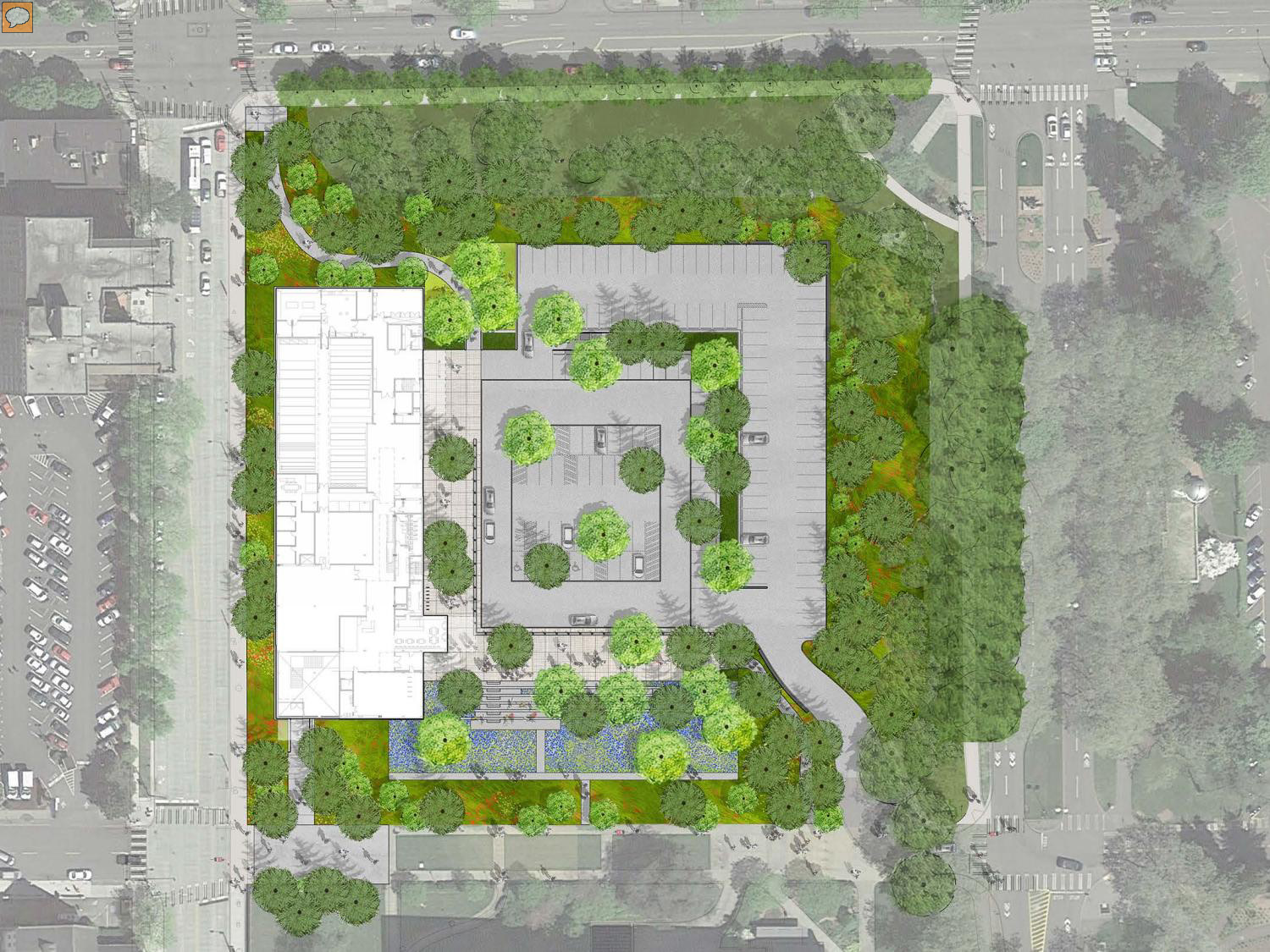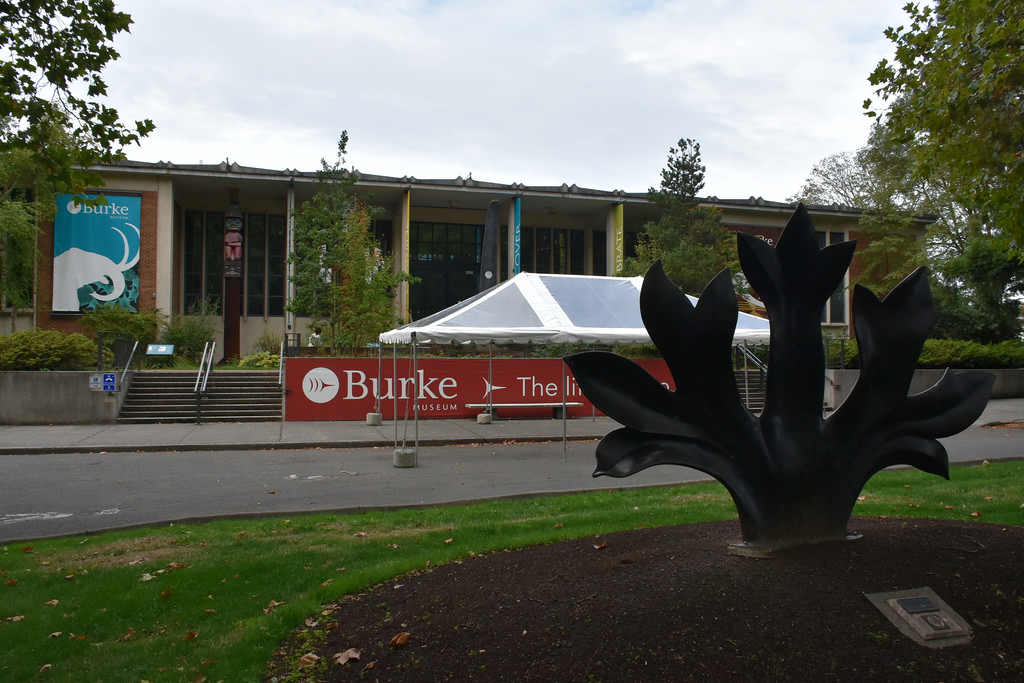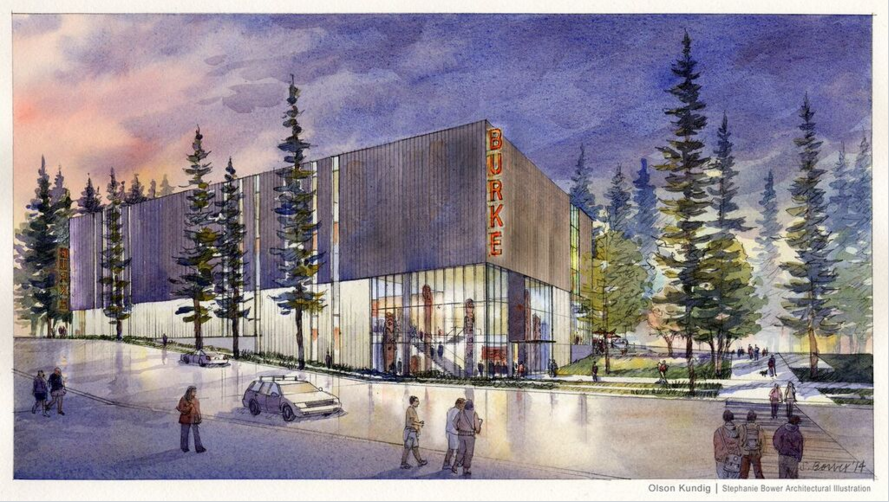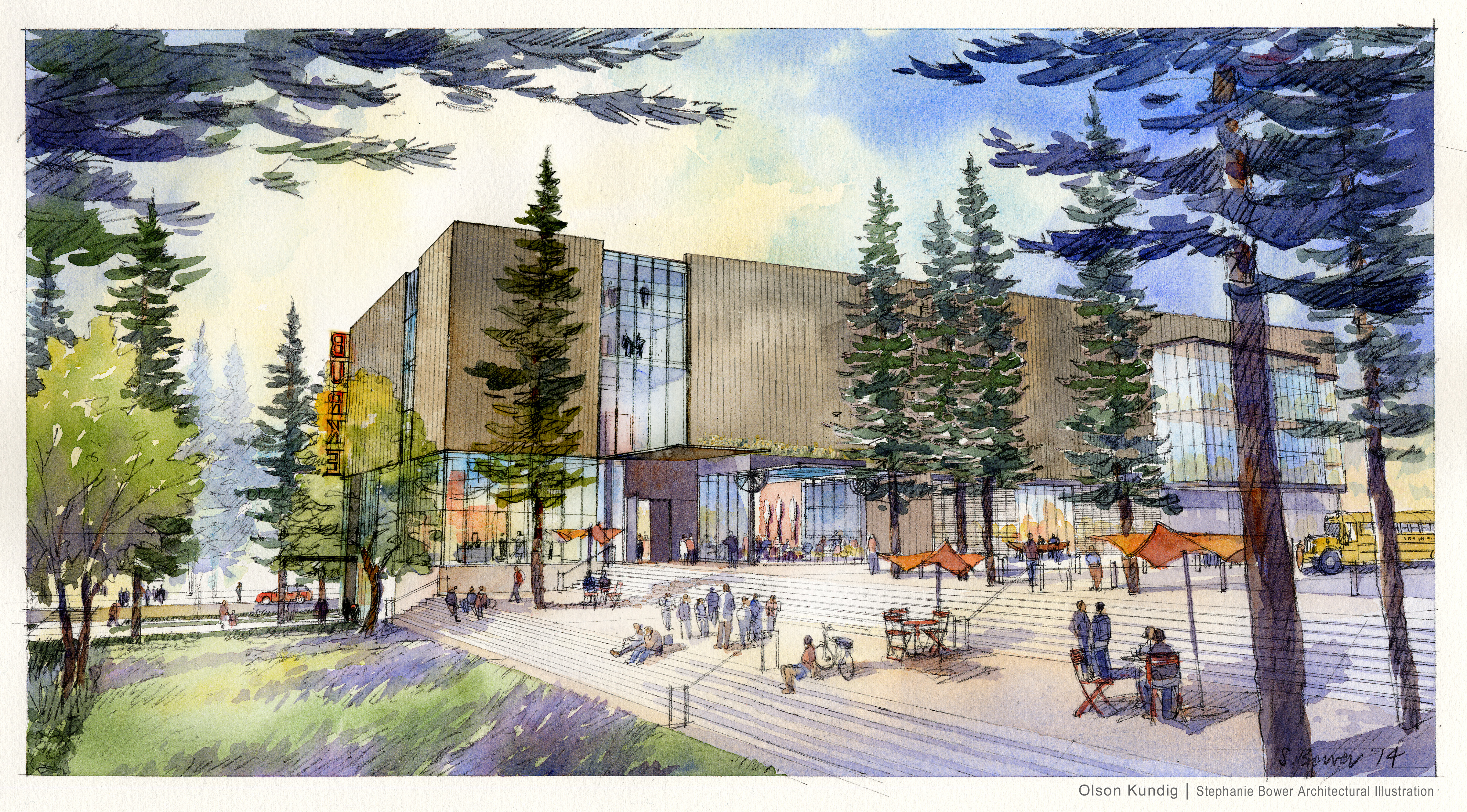The University of Washington (UW) will soon be embarking a major makeover of the Burke Museum, an institution highly respected for its collection of regional archeological and geological artifacts, and extensive ethnography of Coast Salish peoples. The UW plans to completely demolish the existing structure and replace it with a larger, more functional museum and redesigned grounds. Construction on a new building could begin as early as May of this year with demolition of the current building in a later phase of the project.
The origins of the Burke Museum can be traced back as far as 1885 when it was founded by the Young Naturalists Society, a curious group of young gentlemen which included widely known local historical figures like Edmond Meany and Charles Denny (son of Arthur Denny). With their interest in botany and natural history, the collection of what would eventually become artifacts of the Burke Museum grew substantially. By the close of the century, the number of artifacts in the collection had more than surpassed 60,000. The organization was formally named as the Washington State Museum in 1895, and later given its modern name in honor of Thomas Burke, a local lawyer and railroad tycoon.
A variety of well-to-do benefactors, the National Science Foundation, and Washington State came together to build the modern facility standing on the grounds of the UW campus; it opened in 1964 to the public and now numbers more than 15 million artifacts. But after more than 50 years in service, the UW has said that it was time for a modern facility. There are number of reasons for this, but toward the top of the list is the protection of sensitive objects in the collection.

The current building lacks an air conditioning system to ensure proper climate control of the objects. The UW had evaluated options to install a new air conditioning system, but it was determined early on that the costs of remodeling the building greatly outweighed the benefits of simply starting over1. On top of that, the location of the existing building and its construction would make it incredibly challenging for future expansions of the museum on the UW site.

But more than that, the current building is an uninspiring landmark right at a prime gateway to the UW campus. As an artifact of the 1960s itself, the structure is monolithic in scale, hidden at the center of its site, and built to brutalist standards with a concrete shell and inlaid brick. The new building will be a modern take on institutional Northwest architecture with ample glass and woodsy, earthy materials. And it will be considerably larger than the current building, coming in at three stories tall and measuring approximately 110,000 square feet (about a 60% increase in space).
The site layout will be much more conducive for circulation and access, but especially for those with mobility issues. A new entrance on the south side of the structure will be provided from the pedestranized NE Stevens Ln, which connects to 15th Ave NE and the UW campus’s Memorial Way NE. But the primary entrance to the building will be from the east facade; a great plaza space will extend from the facade and wrap around the parking lot to link up with pedestrianized street. Another pathway will help provide direct pedestrian circulation from the corner of NE 45th St & 15th Ave NE to NE Stevens Ln & Memorial Way NE, which will shorten walks for many students to and from the main campus.
Landscape architects have devised a landscaping plan that endeavors to build upon the woodsy tradition of the site. Thought western portion of the site will need to have trees removed in order to prepare a site for the new building, the architects have come up with a plan that will return as many trees as possible to the site while also making the landscaping program much more interesting to visitors. At the southern end of things, the building will be much more visible from the NE Stevens Ln pathway.
But perhaps the most important aspect to the new Burke Museum is how it will interact with the public realm. With the building set right at the edge of 15th Ave NE, it will be a new symbol of the UW taking down barriers between the campus and the larger University District beyond. Exhibits and laboratories within will be so clearly visible from the sidewalk that passerby could almost reach out and touch them. The UW has made several attempts in the past to soften the edges of this side of campus, but this will be the first project to actually do it.


But there are some risks with the proposal. To date, the University of Washington has secured $58.5 million2 out of an $82.5 million capital budget. The UW thinks that the remaining $24 million to complete the project could be allocated by Legislature this year, based upon promises from respective budget chairs in the House and Senate. If funding doesn’t come through, however, the UW says that construction could be put on hold, once the building shell is finished, until full funding is made available to complete the new museum.
Construction of the building is likely to take between 18 and 24 months, and additional work will involve moving the current collection into the new building. The UW says that the collection would be transferred around May 2018 and an opening sometime in Fall 2019.
Footnotes
- Under deferred maintenance assumptions, the existing Burke Museum building would cost more than $100 million over the next 50 years.
- Funding sources come from the State ($29.5 million), private donors ($19.5 million), the UW ($7.5 million), and local public art commissions ($1.9 million).
Stephen is a professional urban planner in Puget Sound with a passion for sustainable, livable, and diverse cities. He is especially interested in how policies, regulations, and programs can promote positive outcomes for communities. With stints in great cities like Bellingham and Cork, Stephen currently lives in Seattle. He primarily covers land use and transportation issues and has been with The Urbanist since 2014.


